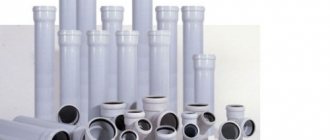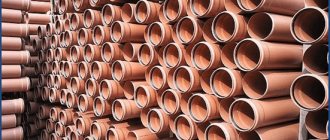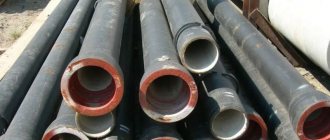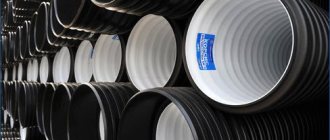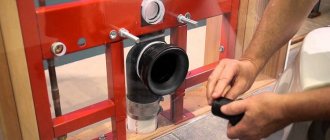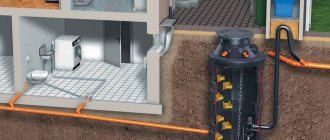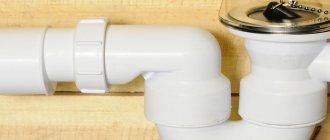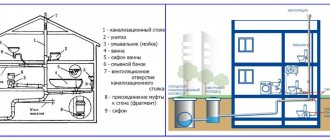Without reliable fixation of pipes during joining, it is impossible to obtain a reliable connection even if the welding work is carried out by a high-class worker. Manual installation and fixation in the desired position takes more time than applying a suture. Therefore, when installing pipelines, a welding centralizer is used, which simplifies and reduces the time required to complete the work.
Features and purpose
When loose pipes vibrate and move during connection, the seam becomes loose and can therefore crack even with minimal load. Therefore, the use of centralizers for welding pipes through which substances that are aggressive or hazardous to human health are pumped is mandatory. They can be used at temperatures from -45 to +45˚C. The accuracy of the alignment of the axes when assembling pipes for welding reduces the resistance coefficient. Therefore, the power of pumping units is reduced.
Depending on the design features, centralizers are used for joining diameters from 25 to 2000 mm. The basis of the design is the body, complemented by a stand or hook and a set of clamping elements. Their number can be changed depending on the diameter of the parts being connected. The equipment is attached to the pipeline on one or both sides of the joint and tightened with a tension mechanism, tightly connecting the ends.
Application
Centralizers have a wide range of applications. This is due to the fact that they are designed for welding pipes of various types and diameters. Because of this, they are used in the assembly of pipelines in the municipal and oil and gas industries. Centralizers are used to fix adjacent pipeline fragments during welding.
The relevance of these tools is determined by the great complexity of combining the connections of fragments of main pipelines by welding, especially of large diameters. This is due to sagging due to the low rigidity of the connected fragments. This must be avoided by ensuring alignment. Otherwise, the quality of the connection will significantly decrease. Moreover, it must be taken into account that coaxiality does not always mean parallelism.
Fixing the fragments ensures stable dimensions of the welding zone. In addition, if a centralizer is used for welding, differences are not formed on the inside of the joint, causing flow turbulence and increasing resistance during pipeline operation. That is, these defects worsen the hydraulic parameters, as a result of which more powerful pumping equipment is required.
Precise positioning ensures the same width of the weld around the circumference in the absence of undercuts, lack of fusion, or sagging, which increases strength. In addition, thanks to this, the use of mechanized welding is permissible.
External centralizers for pipe welding
Their marking consists of the letters CN and a number indicating the maximum permissible diameter in mm. Common types include:
- Multi-link centralizers cope with diameters up to 2 m. They are assembled from elements connected by hinges. The links are tightened manually using a tension screw or hydraulic cylinder. Internal centralizers are more often used for joining large diameter pipes
- Arched varieties consist of two terminals with folding elements, which overlap each other during operation and are then pulled together by a manual or hydraulic mechanism. Designed to work with pipes with a diameter of up to 0.9 m. They are more durable than the previous version, since there are no hinges whose fingers wear out quickly. The number of arches is selected depending on the diameter of the pipes.
- Chain varieties are quickly brought into working position, therefore they are used for laying new and repairing emergency pipelines with a diameter of up to 1.4 m. However, the chain can only be tensioned manually.
- Eccentric devices are similar to arched devices, but the terminals are tightened with an eccentric clamp. When working, high skill is required from the worker, since an incorrectly fixed eccentric can become detached during welding. The disadvantages include rapid wear, which weakens the clamping force. The scope of application is limited to diameters of 0.4 - 0.5 m.
- Clamp-type centralizers are used to connect domestic pipelines with a small diameter. The advantages include compactness and manual clamping using a lever mechanism. The shape of clamps can be rectangular or arched.
- Spring types are indispensable for joining casing pipes underground when drilling wells. The household version is used for laying metal, polymer pipelines and with polyurethane foam.
Preparatory work
Before welding the pipe, it is necessary to prepare the metal in the joint area. The ends must be cut straight, otherwise it will be difficult to apply a reliable seam. The edges are chamfered so that the angle between them is 65 - 70˚. Surfaces at a distance of at least 3 cm from the ends are cleaned with a grinding machine or a metal brush until shiny inside and out. Areas that have changed color after treatment with a sander are removed. Burrs are removed with a file. The sharp edges of the edges are dulled to 2 mm, otherwise they will quickly melt. Then the surfaces are degreased with acetone.
The preparation of the electrodes is no less important. Before starting work, they are calcined in an oven at a temperature of 380 - 400˚C for two hours. For long-term storage, the electrodes are placed in a special case in which the temperature is maintained at 80˚C. A container for this purpose can be made independently from a polyurethane foam pipe. When long-term calcination is not possible, the electrodes are dried with a burner for one and a half minutes with a low flame. This method is prohibited by the rules, but in an emergency there is no choice. Since the coating of the electrodes dries quickly and picks up moisture again, you should not dry more than two pieces at the same time.
Internal centralizers for pipe welding
The hydraulic drive of this equipment ensures internal centering of the pipes and eliminates deflections. They can appear under the influence of their own weight or from soil movements. Adjustment of the movement speed and clamping force is carried out using a DC motor mounted on a hydraulic drive. On pipelines with a diameter of up to 0.3 m, it is possible to use a manual drive.
When joining with an internal centralizer, it is inserted inside the pipe, and the second one is pushed in using a lifting mechanism. The ends are pressed using a hydraulic drive, and the joint is welded. A fan is used to prevent the pipes from becoming too hot during welding. The equipment is removed with a special rod, then inserted into the next joint. Movements are carried out until the completion of pipeline installation.
Internal centralizers are more often used for joining large diameter pipes
Mechanisms with magnets
Devices with magnets are produced for welding work. An example is various angles. The main purpose is the correct arrangement of sheet material when connecting them.
Mechanisms with a permanent or electric magnet are produced in the form of a square and some other common shapes. Due to the influence of the magnet, reliable fixation of the workpieces relative to each other is ensured. In this case, after completing the work, you can quickly remove the structure.
Today, when creating clamps, various magnets, both permanent and electric, can be used. The latter are less practical, but provide greater force on the workpiece.
Choosing the right centralizer
In order not to make a mistake with your choice, you need to take into account the recommendations of experts:
- For working with large-sized polyurethane foam pipes, internal centralizers are unrivaled.
- For pipes with a diameter exceeding 0.8 m, it is recommended to make connections using rigid arched or multi-link devices for outdoor installation. For smaller sizes, eccentric options will provide sufficient clamping force.
- If the pressure of the pumped substance exceeds 5 atm, a centralizer with a hydraulic clamp is selected.
- If there are increased requirements for the quality of the welded joint (for example, ellipse), a chain centralizer is selected.
- In terms of versatility, chain-type devices occupy first place.
Purchasing a centralizer is necessary if you often have to lay or repair pipelines. The high cost of additional equipment will pay for itself many times over by reducing repair costs and increasing the service life of water and heat supply communications. Especially if they are laid underground.
Types of seams
Regardless of what purpose the pipelines are welded for, they have welds that are formed using alternating electric current using a previously selected technology. Today, there are seams at an angle, butt and overlap. They all have their own individual methods and characteristics.
Butt joints are the most common, as they are characterized by the absence of metal deformation. In addition, they are minimally subjected to internal stress and are characterized by high strength with respect to dynamic and static loads. Butt welds are divided into single, used for pipes with a cross-section of up to 500 mm, and double, intended for pipes with a cross-section exceeding 600 mm.
Corner joints are considered butt joints. They are chosen when you need to fasten parts at an angle. Such seams are produced in two ways: without a bevel and with a beveled edge. Corner joints are not as strong as butt joints, but are still of good quality. Overlap seams are great for joining plastic pipes. They are rarely used when welding metal elements. This is explained by the fact that the connections are not very reliable.
How to choose
When choosing a device, you need to evaluate several characteristics:
Sometimes, for household welding work, it is better to use such a device, but purchasing it may not be economically feasible, since it is necessary to weld, for example, 4-5 seams. Then the question may arise, how to make a good centralizer for welding pipes at home? You can replace it with a variety of household appliances that the master has in stock:
- stops working on the principle of a workbench;
- fixing prisms with a mechanical press;
- workbenches equipped with special stands for pipes;
- chain vice.
To fix small-diameter pipelines, you can get by with clamps and a regular bench vise.
Carrying out work using special devices significantly increases the degree of safety. The master does not have to worry that the elements being welded will move
This is important when some of the work has to be done under the pipeline
Work area equipment
Depends on the nature of the welding work performed and the size of the workpieces. For example, when welding large structures, knee lifts with a cradle for the operator and equipment are used. The units can move along guides or along the ground surface; for control, there is a remote control in the basket.
In domestic conditions, a metal table is required, equipped with screens to protect against hot drops of metal and slag. They provide a chair for the welder and a set of devices for fixing parts. Work on flammable floor coverings is not permitted. The walls of the room are painted with light gray materials (to absorb the ultraviolet spectrum). Above the table there are lamps (lighting level from 80 Lux) and a hood with an electric fan (capacity 40 m³/hour).
An effective method to make the weld smooth and airtight
It is no secret that there are special devices adapted to make a perfectly even cut of the cross-section of pipes. But, in addition, if the cut is made as evenly as possible, it will be virtually impossible to combine both pipes with cuts for high-quality welding.
As a result, the weld seam will be uneven and, as a result, the connection will not be sufficiently airtight. A solution to this problem can be an internal or external pipe centralizer.
Features of operation
Before welding, both iron pipes and their PU foam analogues must be leaned against each other as evenly as possible so that there is no gap at the junction.
It is virtually impossible to do such a combination of cuts with your own hands. Moreover, the alignment of cuts becomes an order of magnitude more difficult as the diameter of the pipes increases. Based on this, during the assembly of sewer systems and other pipelines without the use of sewer fittings, special centralizers are used.
The device grasps two compatible pipes and allows them to be connected to each other as accurately as possible, fixing them in this position. Upon completion, welding is performed with a guaranteed high quality seam. After this, the device is dismantled, and the pipeline can be used for its intended purpose.
Main varieties
After we have decided what the centering equipment is used for, we will consider what specific types of devices are on sale.
All centralizers that can now be purchased in relevant stores are divided into two main categories - internal and external.
- External type devices are designated by the abbreviation CN and are intended for installation and use on the outside of pipes. Devices for this type, regardless of size, are simple to use, easy to install and create quick and effective alignment. External type devices are represented by a wide range of equipment (eccentric, link, hydraulic and other configurations).
- Internal centralizers are designated by the abbreviation CV and are hydraulic installations. Devices of this type push out the edges of the pipes from the inside, moving their sections towards each other. The advantage of the equipment is the ability to use it on pipes of different diameters.
